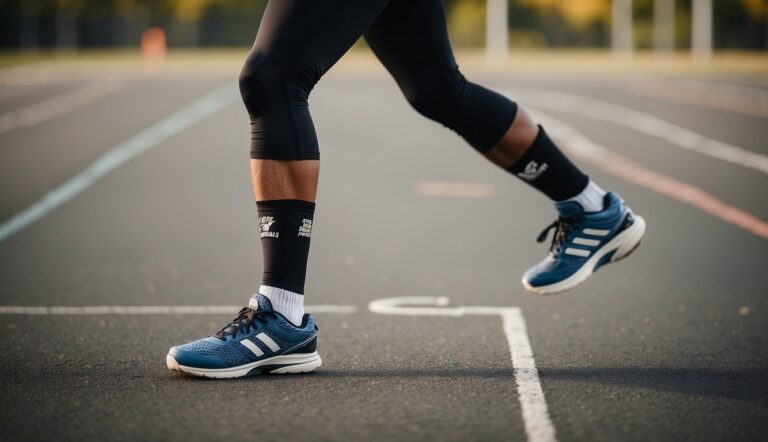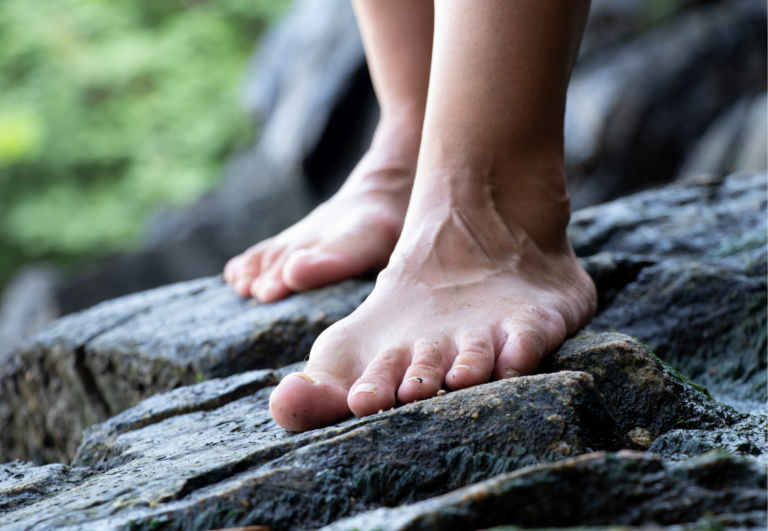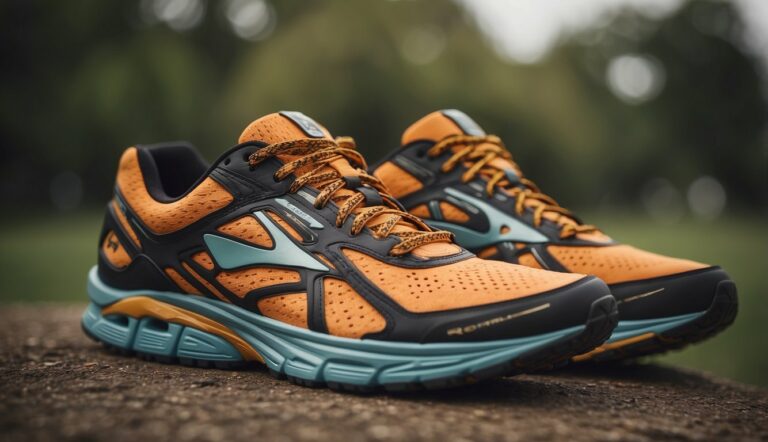How Toe Spacers Can Benefit Foot Anatomy: Exploring Potential Advantages
Toe spacers are a straightforward tool with significant benefits for foot anatomy. Having used toe spacers myself, I can attest to their effectiveness in addressing a range of discomforts that stem from tight shoes and long hours on one’s feet. By creating space between the toes, these spacers promote better alignment, which is essential for maintaining proper balance and foot comfort.
Through regular use, toe spacers can help stretch and strengthen the muscles and ligaments in the foot, often leading to an improved sense of balance during everyday activities, like standing, walking, and even running. As someone who prioritizes foot health, I find that maintaining toe alignment with the help of spacers can make a noticeable difference in overall foot comfort and mobility.
Not only do toe spacers aim to reduce the occurrence of foot conditions such as bunions and hammertoes, but they can also aid in improving circulation within the foot. Enhanced circulation means more oxygen and nutrients reach the foot tissues, facilitating better recovery and health. For anyone looking to support their foot anatomy and promote comfort, toe spacers might be worth considering.
The Role of Toe Spacers in Foot Health
Toe spacers play a critical role in maintaining and improving foot health by addressing toe alignment and providing relief from various foot conditions. By understanding the structure of the foot and common ailments, we can appreciate the benefits of these simple devices in our daily foot care routine.
Understanding Foot Anatomy and Toe Alignment
The alignment of toes is essential for healthy foot function. Toes that are properly spaced aid in balance, posture, and the even distribution of weight across the foot. Issues arise, like bunions and hammertoe, when toes are crowded or deformed, often causing discomfort and further foot deformities.
- Bunions (Hallux Valgus): Protuberances at the base of the big toes.
- Hammertoe: Toes bent downward at the middle joints.
- Corns/Calluses: Thickened skin resulting from pressure.
- Overlapping Toes: Toes that rest on top of each other.
With the consistent use of toe spacers, toes can be gently coaxed back toward their natural position, which can be both a preventative and corrective action for foot anatomy.
Benefits for Common Foot Conditions
Toe spacers are particularly beneficial for those suffering from the discomfort associated with common foot conditions. Here, I’ll highlight specific benefits they offer:
- Improved Toe Alignment: They work to separate the toes, reducing the risk of bunions and hammertoe.
- Alleviation of Pain: By realigning toes, spacers can alleviate the pressure and friction that often leads to corns and calluses.
- Prevention of Overlapping Toes: They can help prevent and treat overlapping toes, which might otherwise lead to more complex foot deformities.
Using toe spacers can be a simple yet effective addition to one’s foot care routine, especially for those who experience regular discomfort or who are looking to prevent future foot issues.

Improving Balance and Stability
Toe spacers are designed to promote a more natural toe alignment, which can lead to improved balance and stability. This provides a stable foundation for both everyday activities and athletic performance.
Enhancing Posture and Gait
My experience with toe spacers has shown me firsthand how they can positively affect one’s posture and gait. By allowing the toes to spread naturally, toe spacers contribute to better balance and a more natural walking pattern. This is crucial for athletes as proper foot alignment can improve overall performance. The key benefits include:
- Better balance: A natural toe spread helps to evenly distribute weight across the foot.
- Improved posture: Aligned feet serve as a sturdy foundation for optimal body posture.
Footwear and Support
Optimal support from footwear is vital, and toe spacers can enhance this by facilitating the natural arch and shape of the foot. Here are specific ways how toe spacers work in conjunction with shoes to boost foot strength and stability:
- Arch support: Toe spacers encourage the natural arching of the foot, reducing flat-footedness.
- Stable foundation: A well-aligned foot inside supportive footwear provides a firm base for all activities.
By fostering an aligned foot structure, toe spacers synergize with the support features of shoes, leading to a more comfortable and stable experience.
Material and Design Consideration
As someone with a wealth of experience using toe spacers, I understand that the materials and design of toe spacers are pivotal in their efficacy and comfort. Choosing the right kind can make a big difference in your experience with them.
Comparing Silicone and Foam Toe Spacers
Silicone Toe Spacers:
- Material: Tend to be more durable and flexible.
- Comfort: Offer a snug fit while providing sufficient cushioning.
- Longevity: Generally more resistant to wear and can be washed and reused.
Foam and Gel Toe Spacers:
- Material: Softer and may compress more easily under pressure.
- Comfort: Might need replacing more frequently due to material breakdown.
- Use: Often a cheaper option but not as long-lasting as silicone.
Importance of Proper Fit and Brand Selection
Fit:
- Ensuring a correct fit is crucial; ill-fitting toe spacers can lead to discomfort rather than relief.
Brand:
- Not all brands are created equal. It’s important to research and select a brand that is reputable and aligns with your specific needs, whether it’s for fashion, insole integration or orthotic purposes.
Toe Spacers for Athletic Use
Toe spacers have emerged as a simple yet effective tool for athletes looking to enhance foot strength and performance. Let’s explore how integrating them into your routine can boost your athletic abilities.
Benefits for Athletes and Active Individuals
Using toe spacers can lead to several benefits for athletes and individuals engaged in regular physical activity. By optimizing toe alignment, these spacers support better muscle engagement and can potentially enhance strength and stability during activities like CrossFit, jumping, and power workouts.
- Muscle Activation: Toe spacers encourage the correct positioning of toes, which can improve muscular activation around the foot. This can translate to increased strength in the muscles responsible for balance and propulsion.
- Injury Prevention: When your toes are properly spaced, the risk of common foot injuries such as blisters, corns, and calluses is reduced. This can contribute to more consistent training by minimizing downtime due to foot-related afflictions.
- Enhanced Recovery: After intense workouts, using toe spacers can help in the recovery process by relieving pressure on the toes, thus enabling muscles to relax and recover more effectively.
Incorporating Toe Spacers in Workouts
Incorporating toe spacers into your fitness routine is straightforward and can yield benefits during both pre-workout warm-ups and post-workout cool-downs.
- Warm-Up Integration: I advise using toe spacers during warm-up exercises to prepare the feet for physical activity. This primes the muscles for performance and helps in preventing injury during high-impact activities.
- Cool-Down Routine: After a workout, toe spacers can be a crucial part of your cool-down routine. They aid in the alignment of the toes and alleviate tension from the muscles, assisting in a faster and more effective recovery process.
Practical Tips for Toe Spacer Usage
Toe spacers can significantly enhance foot comfort and aid in the recovery of various conditions by aligning toes to their natural position. I’ll share some key practices that ensure effective use and the desirable outcomes of incorporating toe spacers into your care routine.
Guidelines for Optimal Use
When starting with toe spacers, it is essential to ease them into your daily routine. Begin by wearing them for short periods—about 10 to 15 minutes—and gradually increase the duration as your toes adjust. This phased approach helps prevent discomfort and allows you to acclimate to the feel of the spacers. Consistency is crucial; thus, incorporating spacers into your daily regimen is advised. Wearing them during the evening when you’re more likely to be at rest or during certain activities can provide optimal benefits. I recommend consulting with a podiatrist (DPM) to develop a personalized treatment plan, as each individual’s feet and conditions may warrant a distinct approach to toe spacer use.
Managing Expectations and Measuring Results
Do not anticipate immediate results; like any rehab tool, toe spacers take time to influence your foot anatomy positively. It is reasonable to expect a period of adjustment where you might experience mild discomfort as your toes adapt to their new positions. Monitoring your progress is key to assessing the effectiveness of toe spacers. Track your comfort levels before and after using spacers and note any changes in the symptoms of foot conditions, like reduced pain or realignment of toe positioning. Consult with your podiatrist to gauge the success of your recovery and make necessary adjustments to your treatment plan, ensuring that your use of toe spacers aligns with your foot health goals.
Potential Risks and Considerations
In using toe spacers for foot health, it’s crucial to acknowledge that while they can benefit many individuals, they may introduce risks if not used properly.
Recognizing When to Consult a Podiatrist
If discomfort or foot pain persists or worsens with the use of toe spacers, I advise seeing a podiatrist. These specialists can determine if the discomfort is due to an injury, strain, or an underlying condition. Strains or injuries shouldn’t be self-treated, and a podiatrist can develop a treatment plan that may include toe spacers along with other interventions.
Avoiding Overuse and Dependency
It’s imperative not to overuse toe spacers to avoid causing additional issues or becoming dependent on them for pain relief. Initially, I recommend using them for short periods and gradually increasing as tolerated. Be mindful of the body’s signals and allow time for recovery to prevent overuse injuries.





